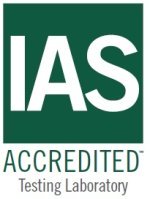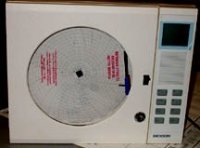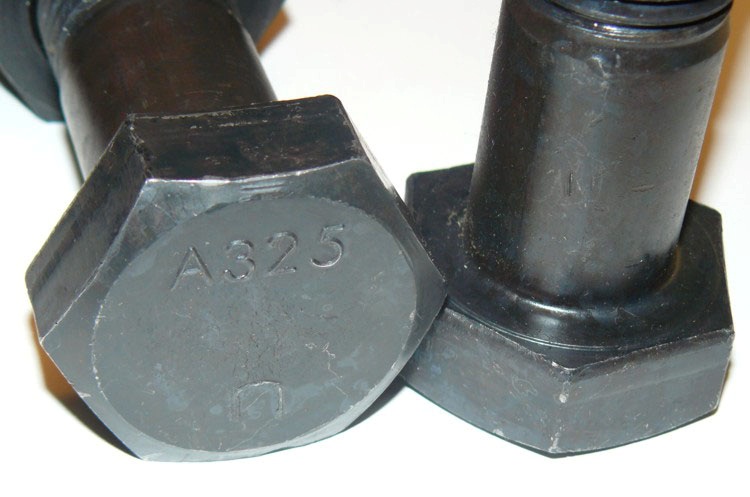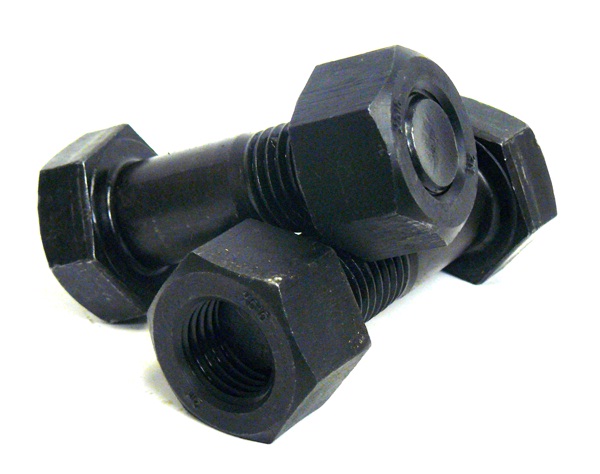|
Field Inspection
Laboratory Services
Consulting
Forensics NDT Services
TEMPLUG
Employment

Accreditations/Affiliations
I.A.S., ISO 17025
AASHTO AAP
AWS
I.C.C.
DSA
|
Frequently Asked Questions
Some Rust on Rebar is Acceptable

There is some question on our project whether rust on the reinforcing steel is acceptable. I’ve been told that rust was not a reason for rejection, do you know of some authoritative document that takes account of cleanliness of the bar?

According to the Concrete Reinforcing Steel Institute CRSI in a similar FAQ they state “Rust actually improves bond because it increases the roughness of the surface. However – and this is the exception – if there is so much rust that the weight of the bar is reduced or the height of the deformation is reduced, then the rust is considered harmful.”
 Check out the following references:CRSI Engineering Data Report #54 Field Inspection of Reinforcing Bars, Page 3, Surface Conditions of Bars “A light surface coating of rust on reinforcing steel should not be a cause for rejection by the inspector”ACI 318 Building Code and Commentary - Section 7.4.2 - “Except for prestressing steel, steel reinforcement with rust and mill scale, or a combination of both shall be considered satisfactory, provided the minimum dimensions and weight of a hand-wire-brushed test specimen comply with applicable ASTM specifications.”7.4.3 – “Prestressing steel shall be clean and free of oil, dirt, scale pitting and excessive rust. A light coating of rust shall be permitted.”ASTM A 615 Standard Specification for Deformed and Plain Carbon Steel Bars for Concrete Reinforcement – Section 12.2 “Rust, seams, surface irregularities, or mill scale shall not be cause for rejection, provided the weight, dimensions, cross-sectional area and tensile properties of a hand wire brushed test specimen are not less than the requirements of this specification.”ASTM A 706 Standard Specification for Low-Alloy Deformed and Plain Bars for Concrete Reinforcement – Section 11.2 “Rust, seams, surface irregularities, or mill scale shall not be cause for rejection, provided the weight, dimensions, cross-sectional area and tensile properties of a hand wire brushed test specimen are not less than the requirements of this specification.”CALTRANS – Standard Specifications May 2006 Section 52-1.05 CLEANING “Before concrete is placed, the reinforcement to be embedded shall be free of mortar, oil, dirt, excessive mill scale and scabby rust and other coatings of any character that would destroy or reduce the bond.”CONCLUSIONAs noted in documents issued by ASTM, ACI, CRSI, and Caltrans, some rusting of the reinforcing steel is acceptable and advantageous. The difficulty in addressing this issue is the subjectivity of a visual evaluation as suggested by CRSI (“A light surface coating…”) and Caltrans (“…free of …excessive mill scale and scabby rust and other coatings of any character…”). Common sense and fabrication tolerances should be used. Where there is readily visible pitting or scale associated with rust (not mill scale) and where the engineer or inspector have cause for concern that the deformations and/or cross sectional area of the bar have been reduced, the degree of rusting may need to be determined by laboratory testing. As always, the project specifications, where more stringent than the published standards, shall prevail over all else.
Do Metal Fasteners in Contact with Wood Perservative Require Corrosion Protection?

Do foundation hold-downs
bolts, anchor bolts, plate washers, straps, nails, etc. attaching pressure
preservative treated wood, have to be hot-dipped zinc coated galvanized,
stainless steel, silicon bronze or copper? 
The International Residential Code (R319.3) and the International Building Code (2304.9.5) have similar requirements for fasteners used with treated wood. The IRC states, "Fasteners for pressure-preservative and fire-retardant-treated wood shall be of hot-dipped zinc coated galvanized steel, stainless steel, silicon bronze or copper. The coating weights for zinc-coated fasteners shall be in accordance with ASTM A153. Exceptions:1. One-half inch (12.7mm) diameter or greater steel bolts. 2. Fasteners other than nails and timber rivets shall be permitted to be of mechanically deposited zinc-coated steel with coating weights in accordance with ASTM B695, Class 55, minimum." The codes do not discriminate between types of preservatives and do not take into account exposure conditions, nor do they contain provisions for other hardware such as connectors or flashing.The potential for corrosion of hardware in contact with treated wood occurs when metals in the preservative (such as copper) are different from the metals in the hardware (the iron in steel, or aluminum). In a wet environment these dissimilar metals create a small electrical current that triggers a chemical reaction resulting in galvanic corrosion.In damp or wet exposure, hardware in contact with pressure-treated wood must be corrosion resistant. Hardware includes fasteners (e.g. nails, screws, and bolts) and all connectors (e.g. joist hangers, straps, hinges, post anchors, and truss plates).Regardless of exposure condition, fasteners and connectors should be specified in compliance with the hardware manufacturer’s recommendations and the building codes for their intended use.A conclusion from the above would indicate that shear wall nailing to a pressure-treated sill plate requires galvanized nails.
Curing Room - Recording Thermometer

In ASTM C511-04 it talks about calibration of the recording thermometer then continues to discuss how to perform verification of the recording thermometer. If the recording thermometer is calibrated every six months what logic says we have to perform verification. This seems redundant; can you give us a little insight of logic? Excerpt from Section 5.1 ASTM C511 Standard Specification for Mixing Rooms, Moist Cabinets, Moist Rooms, and Water Storage Tanks Used in the Testing of Hydraulic Cements and Concrete
“The recording thermometer shall be calibrated at least every six months or whenever there is a question of accuracy. Perform the verification of the recording thermometer by comparing the temperature reading of the recording thermometer with the temperature reading of a reference thermometer during the normal operation of the moist cabinet or moist room. The thermometer used as the reference thermometer must be accurate and readable to 0.5°C”.

We posed this question to the ASTM staff member in charge of C 511 who asked Mr. Ray Kolos of CCRL to respond. Mr. Kolos stated that the intent of the standard is that verification of the recording thermometer will be conducted every six months using a reference thermometer. Section 5.1 uses the term “calibrated” even though verification is intended. Mr. Kolos will ask the chairman of the ASTM committee C1.95, Mr. Dave Norris, to consider a modification to correct the error.
Notes and Footnotes in ASTM Standards, Mandatory or Not?

We’ve just had a laboratory evaluation and one of the test methods examined was ASTM C39. As a footnote to our evaluation they noted that the compression-testing machine had bearing blocks that were slightly softer than the 55 HRC mentioned in NOTE 4 of C 39. How do we handle this in the future without the cost of hardness testing?

Rather than addressing the subject of hardness and what might be a reasonable tolerance lets discuss the point of authority that the evaluator is quoting. According to an ASTM document “Form and Style for ASTM Standards” Section A27.1 “Notes in the text shall NOT include mandatory requirements. Notes are intended to set explanatory material apart from the text itself, either for emphasis or for offering informative suggestions not properly part of the standard.” Therefore I would suggest that the Subcommittee C09.61 on “Testing Concrete for Strength” feels that a comment on hardness is appropriate but cuts short of mandatory language. The subcommittee has recommended a hardness number of 55HRC. A slight difference from the recommended would not be a violation of the intent of C39 but a reasonable tolerance is not given. The same document mentioned above also discusses Footnotes in Section A26.1. “Footnotes referenced in the text are intended ONLY for reference and shall never include any informa-tion or instructions necessary for the proper application of the method. Table footnotes are a part of the table.” Therefore again we see that no mandatory language should be outside of the main text of the document.
Jump to Top
Standardization Records
 Recently, we were in the process of installing a new temperature recorder for our curing room. During this period we experienced a CCRL inspection. They correctly noted a footnote of deficiency. “The accuracy of the temperature recorder for the moist storage facilities was not verified at six month intervals as required by Section 5.2.1 of C511. Subsequently AMRL is requesting our current standardization records. Could you enlighten us to what is meant by this terminology (verify standardization)?

“The standardization record for the recorder is a record that details the comparison made between the recorder and a reference thermometer as described in C-511, and adjusting the recorder if it is outside the allowable tolerance. There are six items of information you’ll want to include on the record.”1. Unique identification of the recorder.2. Unique identification of the reference thermometer.3. Name of the person who performed the standardization.4. Reference to the procedure used, for example, “Procedure used: C511”5. Date the standardization was performed.6. Detailed results including temperature indicated by both thermometer, and indication of adjustment made and new temperature reading if necessary. According to Section 5.2.1.3 of ASTM C511-06 the laboratory is to verify the accuracy of the temperature recorder with that of the reference temperature-measuring device and adjust the temperature recorder if the difference is greater than 1º C. This process is considered Standardization, which is a simplified form of calibration. The process determines the correction to be applied to the result of a measuring device when compared to a reference standard. Standardization does not address all of the elements of uncertainty and does not lead to traceable measurements.
According to ASSHTO PP57-06 this process is termed verification of standardization a process that establishes whether the results of a previously standardized measurement device are in control
How is a Bolt Head Formed?
 A colleague of mine suggested that the head of a high-strength bolt was attached to the shaft by welding the two parts. Could you explain the process for the assemblage? 
The head of a bolt is formed by heating the end of a piece of steel round bar and then forging (reshaping) the heated end into a head. The head is not welded on or otherwise “attached” to the end of the round bar.For example, the production of a 1” diameter x 12” long A 325 bolt begins by cutting a 20 ft. length of 1045 steel round bar into 13-11/16” pieces. Since the finished bolt length of 12” is measured from the end of the bolt to the underside of the head, we must add 1-11/16” to the cut length of the bolt. After cutting the bolt to length, this added material (1-11/16”) is heated to approximately 2000 degrees Fahrenheit and forged into whatever head style the specific bolt requires. In the case of an A325 bolt, the head style is a heavy hex structural bolt. After the head is forged, an A325 bolt undergoes a heat-treating process in which the bolts are quenched and tempered to develop the high strength mechanical properties required by the specification. The next step in the process is to test the bolts to ensure that they meet the strength requirements. After verification, they are threaded with 1-3/4” of 8 pitch Unified National Coarse thread.Information provided by Portland Bolt & Manufacturing Company, www.portlandbolt.com
|
Minimum bolt - Nut Engagement  I’m working on a project where the bolts were miss-ordered short. When installed according to the plans and specs, the end of the bolt is flush with the face of the nut. How much of a bolt must project beyond the nut when properly installed?  
Though a common rule-of-thumb is "three threads past the nut", it is just that – a rule-of-thumb, with no basis in fact. In order to arrive at the right answer, we need to follow the reference document chain. If we start with the 2006 IBC, section 1704.3.3 states “…inspect in accordance to AISC specifications”, which is a very broad statement. Chapter 35 is a little more specific by designating AISC 360-05 “Specification for Structural Steel Buildings”. However, table 1704.3 gives us AISC 360, section M 2.5, which gets closer to the heart of the matter. Section M 2.5 states “The use of high-strength bolts shall conform to the requirements of the RCSC Specification for Structural Joints Using ASTM A325 or A490 Bolts, except as modified in Section J3. Note that section J3 makes no statement about bolt - nut engagement. Thus, we have arrived at the correct specifying document, Specification for Structural Joints Using ASTM A325 or A490 Bolts, hereafter referred to as the RCSC 2004. Section 2.3.2 of the RCSC 2004 states, "The bolt length used shall be such that the end of the bolt extend beyond or is at least flush with the outer face of the nut when properly installed." So while the old rule-of-thumb won't hurt, the short bolts will work just fine.Reference Documents2004 RCSC "Specification for Structural Joints Using ASTM A325 or A490 Bolts"AISC 360-05 “Specification for Structural Steel Buildings” |
|







